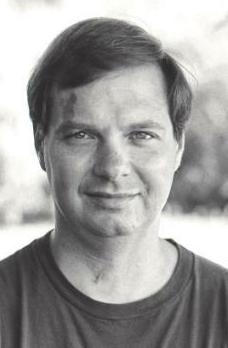(Died: October 2, 1997)
Physicist, Electrical Engineer, Inventor
Interests: Inertial Propulsion, New Energy Age: 62
Bruce Eldridge De Palma (1935-1997), son of noted orthopaedic surgeon Anthony DePalma and elder brother of film director Brian De Palma, was a well known figure in the Free energy suppression community. He claimed that his N-machine Homopolar generator, a device based on the Faraday disc, could produce five times the energy required to run it. According to mainstream physics, no such device is physically possible.
De Palma studied electrical engineering at Harvard (1958) and taught physics at MIT for 15 years, working under Harold Eugene Edgerton. He was also employed by Edwin H. Land of Polaroid fame.
Bruce De Palma's development of the N-machine concept in 1977, among his other anomalous devices (at least one of which, De Palma claimed, displayed anti-gravity characteristics) and the claims surrounding them, set him on a collision course with his more mainstream peers. His claims of 'free energy' were vigorously refuted over the course of twenty years, by conventional scientists and some members of the alternative energy community alike.
His search for financial backing for the construction of a marketable N-machine saw him relocate from Santa Barbara, California to Australia c. 1994, and then New Zealand in 1996.
Probably his greatest ally in his conviction that the N-machine could solve the world's energy and environmental crisis was Paramahamsa Tewari, a Project Director with the Indian Nuclear Power Corporation, with whom he corresponded regularly over many years. Tewari's Space Power Generator, claimed to be 200% efficient, is based on the same theoretical foundations as the N-machine.
De Palma's death in New Zealand in October 1997 put an end to his most ambitious free energy project, and occurred only weeks prior to the official testing of a device constructed over the course of 6 months in an Auckland workshop. The test was attended by, among others, the project's financial backer, Bruce Bornholdt, a prominent Wellington barrister, as well as the pioneering developer of the Adams Motor, Robert Adams, who observed the operation of, and measured electrical output from, the N-machine. This single test failed to demonstrate the over-unity potential of the N-machine, most of the output energy being lost as heat, and the project was immediately dissolved.
Articles:
- DePalma's Spinning Gyro Work, NEN Vol. 6, No. 10, July 1999
- Understanding The Dropping Of The Spinning Ball Experiment (Bruce DePalma), NEN, Nov. 1997
- Commentary on the Death of Bruce dePalma, Oct 1997
- Report of the Death of Bruce Depalma, Oct. 1997
- The Home of Primordial Energy - Bruce DePalma's Website, Aug. 1997
- "Where Electrical Science Went Wrong," A Paper by Bruce dePalma, 1993
- "The Secret of the Faraday Disc", DePalma Institute, Santa Barbara, CA, 2 Feb 1984.
- "The Rotation of the Universe", DePalma Institute Report #83, Santa Barbara, CA, 25 July 1983.
- "Studies on rotation leading to the N-Machine", DePalma Institute, 1981.
- "Performance of the Sunburst N-Machine", Simularity Institute, Santa Barbara, CA, 17 December 1980.
- "Rotation of a Magnetized Gyroscope", Simularity Institute Report #33, 16 July 1979.
- "The N-Machine", Paper given at the World Symposium on Humanity, Pasadena, CA, 12 April 1979.
- "Researchers see long-life satellite power systems in 19th century experiment", Research News, Satellite News, 15; June 1981. (Reports DePalma's claim for free-energy generator)
- Timothy J. Wilhelm: "INVESTIGATIONS OF THE N-EFFECT ONE-PIECE HOMOPOLAR DYNAMOS, ETC. (Phase I)", Stelle, IL, 12 Sept. 1980. (Discusses tests on DePalma's N-Machine)
- Timothy J. Wilhelm: "INVESTIGATIONS OF THE N-EFFECT ONE-PIECE HOMOPOLAR DYNAMOS, ETC. (Phase II)", Stelle, IL, 10 June 1981. (Design and tests of improved homopolar generator/motor)
US Address: PO Box 580, Temecula, CA 92390.


